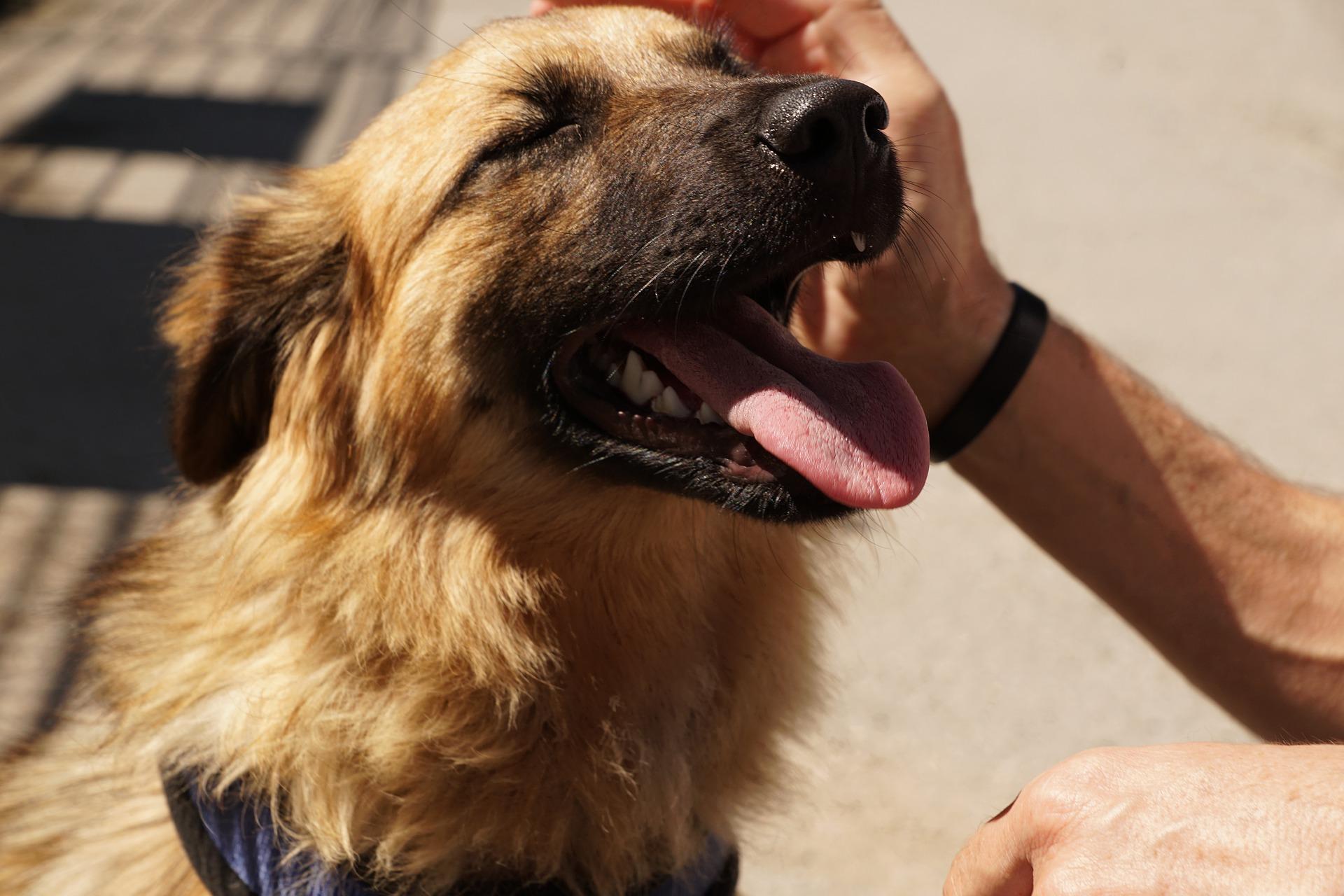FAST, FREE STANDARD SHIPPING on all orders above $75
FAST, FREE STANDARD SHIPPING on all orders above $75
SHOP
Hands Free Dog Leash

Double Leashes

Accessories

SWAG

About
How to Prevent Bad Breath in Dogs
Periodontal disease the silent killer
Bad breath in dogs is not just unpleasant for you. It can be a huge red flag regarding the general health of your dog. It is a sign that your dog's health needs to be improved, and it is something you will need to look into. If you are still unsure if you are overly sensitive to their bad breath or if there is a severe health issue… then go and see your Vet.
What is Periodontal disease?
You may know it more simply as gum disease.
Periodontal disease in dogs is a condition that affects the gums, bone, and other supporting components of the teeth and is caused by bacteria in the mouth.
Because the illness lives beneath the gums, apparent indicators of gum disease in dogs sometimes don't appear until the condition is quite advanced. As a result, it's critical to start preventative dental care for your pooch at a young age.
Is gum disease in dogs more common in certain breeds?
Periodontal disease can be exacerbated by poor dental care, heredity lines, a misaligned bite (malocclusion), and a dog's mouth's form (shape).
Small and toy dog breeds, as well as snout-shortened breeds, are particularly susceptible to the condition.
HERE ARE OUR RECOMMENDATIONS FOR DOG TOOTHPASTE
Is periodontal disease easy to spot
A short dental exam should be included in every visit to the Vet for your doggy. A comprehensive oral examination should be done on your furry best friend if they have an oral infection. Your veterinarian may take dental x-rays and utilize tools to measure bone loss in addition to the visual examination.
When you peek into a dog's mouth, you can see tartar above the gumline. It seems to be brown concrete and begins at the base of the gums, gradually covering more and more of the tooth's surface. Plaque and tartar that have spread beyond the gumline are considerably more difficult to notice, but this is when the main problem begins: damage to the supporting tissues around the tooth, which raises the risk of tooth loss.
The four stages of periodontal disease are as follows:
Level 1: Gingivitis causes minor swelling and redness of the gums. There may also be some tartar buildup evident. At this point, the tooth's support has not been compromised.
Level 2: Early periodontitis is diagnosed when the bone and ligaments that hold teeth in place have lost some of their strength. The gums are redder and more irritated at this point.
Level 3: When up to 50% of the tooth support has been lost, you have moderate periodontitis. (Teeth in Stages 2 and 3 appear identical to the naked eye, but an x-ray will reveal more bone loss in Stage 3.)
Level 4: Advanced periodontitis has resulted in a 50% or more loss of bone. Tartar is quite visible to the human eye at this point; the gums have receded, the teeth have been damaged, and extraction may be required.
Other causes of bad breath in dogs
Bad habits
Dogs love doing things we may think are gross. Their habits can lead to poor breath in some cases. If your dog has access to rubbish, animal poop, or decomposing animal remains daily, his foul breath could result from unsupervised eating.
Diabetes
You should schedule an appointment with your Vet if your dog's bad breath smells sweet or fruity. Diabetes, a dangerous but manageable disorder, is characterized by sweet, fruity breath.
Kidney Disease
The odor of urine on your dog's breath is a sign of renal illness. Has a Vet checked it out immediately?
Liver disease
If your dog has foul breath, vomiting, a lack of appetite, and a yellow tinge to her gums, they could have a liver condition.
CHOOSE PET DREAMLAND LEASHES
FOR A 100% LIFETIME WARRANTY
How to prevent bad breath in dogs
You need to treat your dogs' teeth and gums with as much care as you would treat your own in many ways. Here are some handy tips for your dogs:
- Brush their teeth. It seems obvious, but it is something certain breeds require, and it is something to consider for any species you own.
- You can buy dental treats, special dental sticks, and chews that help clean your dogs' teeth, but they are disguised as a tasty treat for your dog.
- High quality and healthy food, you should give your dogs the best quality food you can afford. We are big fans of the BARF or Prey diet, and we saw significant improvements in dental health when we made the switch.
- High-quality snacks; we love to spoil and treat our dogs but make sure you get healthy and nutritious snacks and treats for them. Rather than getting some random dog biscuit, try dried Sprats instead.
- Natural yogurt is an unusual suggestion, but studies show that just a teaspoon mixed into their regular food helps with dental health.
- Herbs, certain herbs have been shown to help with dental health. Parsley and Dill are perfect. Do your research, though, as some herbs are harmful to dogs.
- We try not to promote specific brands here, but we have had success with Plaque Banish. This is a supplement that you add to your dog's meals. It is dried natural seaweed, and it gets excellent reviews on Amazon.
Final thoughts
It is very important that you have regular health checks and medical checkups for your dog, and hopefully, most of the time, they will get a clean bill of health.
However, if something is wrong with them, it is always better to find out as early as possible. This is especially true for bad breath; the earlier you notice it and treat it… the better.
For all general inquiries, please contact us at customer@petdreamland.com
©2020 Copyright. All rights reserved










